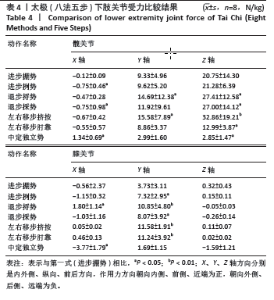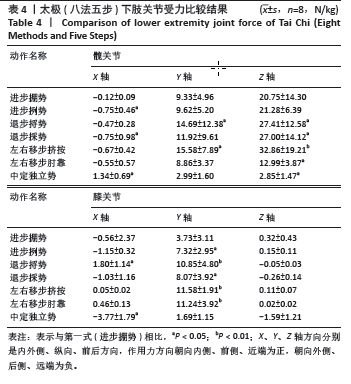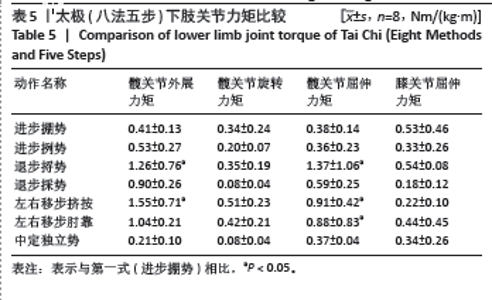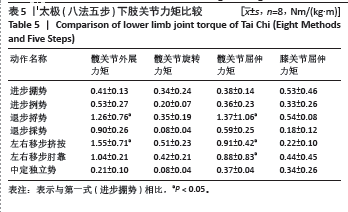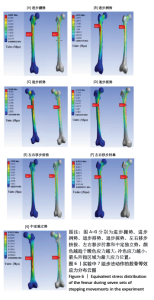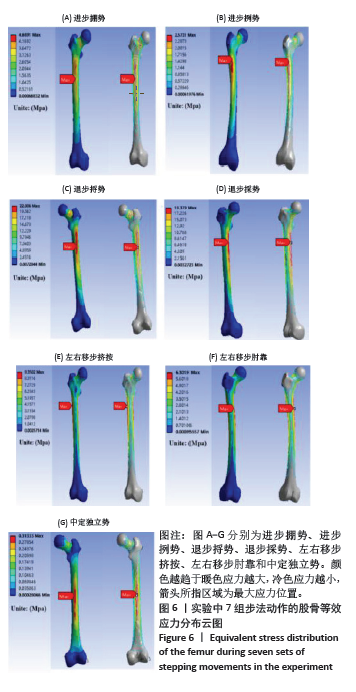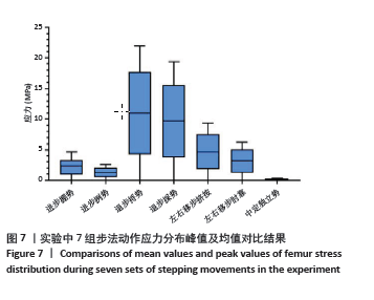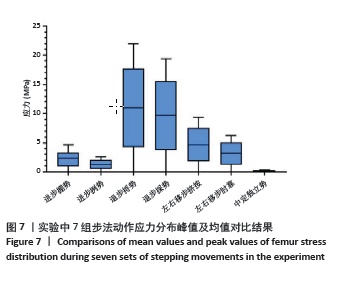[1] GE Y, LIU H, WU Q, et al. Effects of a short eight Tai Chi-forms for the pre-frail elderly people in senior living communities. Phys Ther Theory Pract. 2022;38(12):1928-1936.
[2] Liu S, Wu S, Qi J, et al. Effect of traditional Chinese fitness exercises on bone mineral density in postmenopausal women: a network meta-analysis of randomized controlled trials. Front Endocrinol. 2024;15: 1323595.
[3] Niu Y, Buranarugsa R, Kuhirunyaratn P. Comparing the effects of Bafa Wubu Tai Chi and traditional He-style Tai Chi exercises on physical health risk factors in overweight male. college students: a randomized controlled trial. Int J Environ Res Public Health. 2023; 20(14):6323.
[4] Tam HL, Leung L YL, Chan ASW. Effectiveness of Tai Chi in patients with hypertension: an overview of meta-analyses. J Cardiovasc Nurs. 2023;38(5):443-453.
[5] 吕寻鲁.太极(八法五步)的运动生物力学特征分析[D].石家庄:河北师范大学,2020.
[6] 庞博,张子华,纪仲秋.基于AnyBody仿真的八段锦动作下肢生物力学特征研究[J].应用力学学报,2023,40(1):234-240.
[7] 庞博,纪仲秋,张子华,等.基于AnyBody仿真的太极拳不同步型特征[J].医用生物力学,2021,36(6):916-922.
[8] 吕韶钧.太极八法五步[M].北京:北京体育大学出版社,2018:2.
[9] Nagaraja VH, Bergmann JHM, Andersen MS, et al. Comparison of a scaled cadaver-based musculoskeletal model with a clinical upper extremity model. J Biomech Eng. 2023;145(4):041012.
[10] Nakashima M, Kanie R, Shimana T, et al. Development of a comprehensive method for musculoskeletal simulation in swimming using motion capture data. Proceedings of the Institution of Mechanical Engineers Part P. J Sports Eng Technol. 2023;237(2):85-95.
[11] Grindle D, Aira J, Gayzik FS, et al. A validated lower extremity model to investigate the effect of stabilizing knee components in pedestrian collisions. Proc Inst Mech Eng H. 2022;236(10):1552-1571.
[12] Wirtz DC, Schiffers N, Pandorf T, et al. Critical evaluation of known bone material properties to realize anisotropic FE-simulation of the proximal femur. J Biomech. 2000;33(10):1325-1330.
[13] Toyohara R, Kurosawa D, Hammer N, et al. Finite element analysis of load transition on sacroiliac joint during bipedal walking. Sci Rep. 2020;10(1):13683.
[14] 罗林聪,马立敏,林泽,等.基于Anybody骨骼肌肉多体动力学分析的有限元仿真[J].医用生物力学,2019,34(3):237-242, 250.
[15] Haibo L, He G, Peng C, et al. Biomechanical effects of typical lower limb movements of Chen-style Tai Chi on knee joint.Med Biol Eng Comput. 2023(11):61.
[16] Gu W, Pandy MG. Direct validation of human knee-joint contact mechanics derived from subject-specific finite-element models of the tibiofemoral and patellofemoral joints. J Biomech Eng. 2020;142(7): 071001.
[17] Yu XM, Jin XM, Lu Y, et al. Effects of body weight support-Tai Chi footwork training on balance control and walking function in stroke survivors with hemiplegia: a pilot randomized controlled trial. Evid Based Complement Alternat Med. 2020;2020(3):1-9.
[18] 杨静,杨通.竞赛规则下竞技太极拳推手技法中“掤”的特质与作用分析[J].广州体育学院学报,2019,39(5):95-98.
[19] Li H, Wang X, Du Z, et al. Analysis of technical characteristics of typical lower limb balance movements in Tai Chi: a cross-sectional study based on AnyBody bone muscle modeling. PeerJ. 2023;11:e15817.
[20] Wai GMCK, Ying E. Tai Chi Chuan: Estilo Yang Tradicional. Barany Editora. 2020.
[21] 全国体育院校教材委员会.中国武术教程:上册[M].北京:人民出版社,2003:440-441.
[22] 侯胜川.我国精英太极拳运动员口述史研究[J].体育与科学,2022, 43(4):68-74.
[23] Wayne Peter M, Buring JE, Davis RB, et al. Tai Chi for osteopenic women: design and rationale of a pragmatic randomized controlled trial. BMC Musculoskelet Disord. 2010;11(1):4.
[24] Liu H, Gong H, Chen P, et al. Biomechanical effects of typical lower limb movements of Chen-style Tai Chi on knee joint. Med Biol Eng Comput. 2023;61(11):3087-3101.
[25] 胡一礼.对八法五步太极拳阶段式练习方法与步骤的探析[J].文体用品与科技,2022,2(2):49-51.
[26] Ben-Or M, Shavit R, Ben-Tov T, et al. Control of the micromovements of a composite-material nail design: a finite element analysis. J Mech Behav Biomed Mater. 2016;54:223-228.
[27] Fadaei Dehcheshmeh P, Gandomi F, Maffulli N. Effect of lumbopelvic control on landing mechanics and lower extremity muscles’ activities in female professional athletes: implications for injury prevention. BMC Sports Sci Med Rehabil. 2021;13(1):101.
[28] O’Neill A, Beazley DA, Bolgla L. The effect of tai chi on dynamic balance in younger adults: implication for physical therapy practice. Int J Allied Health Sci Pract. 2022;20(3):2.
[29] Li H, Peng F, Lyu S, et al. Study on two typical progressive motions in Tai Chi (Bafa Wubu) promoting lower extremity exercise. Int J Environ Res Public Health. 2023;20(3):2264.
[30] Kong J, Tian C, Zhu L. Effect of different types of Tai Chi exercise programs on the rate of change in bone mineral density in middle-aged adults at risk of osteoporosis: a randomized controlled trial. J Orthop Surg Res. 2023;18(1):949. |
